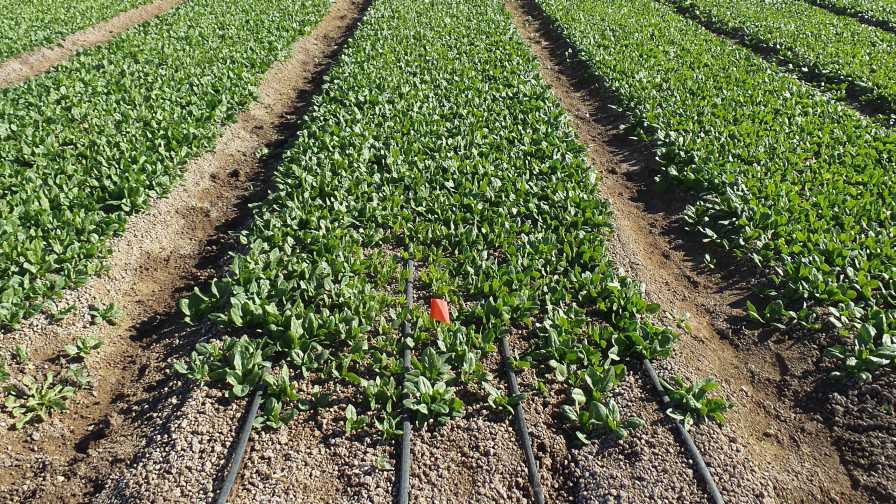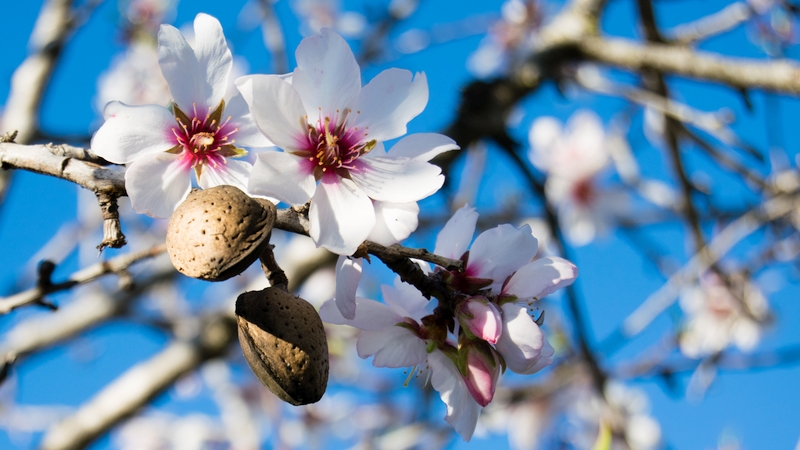What You Need To Know About Optimizing Your Chemigation Program

Transplants and seedlings have a smaller root zone compared with large more mature plants. So they can take a shorter exposure to chemigation. Photo by Aliashar Montazar
Chemigation in drip-irrigated crops allows for the delivery of systemic insecticides through irrigation water directly to the root system. And it does so in precise amounts needed for cost-effective insect control. It also reduces worker exposure to pesticides by eliminating the insecticide applications to plant foliage. Since many Western growers already use drip irrigation to optimize water use, modifying the system to also deliver insecticides makes sense. It offers growers an environmentally sound insect management tool.
Tips to Optimizing Chemigation
Successful chemigation of systemic insecticides depends on the efficient delivery of the compound to the actively growing roots. Before applying systemic insecticides through a drip irrigation system, consider a few agronomic and chemical factors that can influence the outcome.
1. Root Types
The duration of chemigation will vary with plant size and root type. Transplants and seedlings have a smaller root zone compared with large, more mature plants, and thus typically require shorter chemigation periods. In either case, the roots will only take up insecticides when plants have adequate soil moisture for plant growth. Similarly, root types can also affect chemigation. Brassica crops like broccoli and cabbage tend to have shallow, fibrous root systems and will have different irrigation requirements than deep, tap-root, crop-like cantaloupe.
2. Soil Properties
Irrigation water moves at considerably higher flow rates in coarse, sandy soils compared with fine-textured, clay soils. Thus, soil texture influences irrigation frequency and duration and can determine how insecticides are applied in drip systems. The amount of organic matter in the soil may also influence the movement of insecticides during drip chemigation. For example, imidacloprid tends to bind up in soils with high organic matter, reducing the amount of insecticide available for root uptake. Not surprising that imidacloprid is marginally effective against some insects in high organic, muck soils.
3. Insecticide Properties
Research has demonstrated that insecticide mobility will determine the optimal timing for drip chemigation. Insecticide movement in the soil is largely influenced by its water solubility and partition coefficient.
For example, imidacloprid and chlorantraniliprole have low water solubility and low partition coefficients and do not move much in the soil. Thus, when chemigating in drip systems, you should inject these insecticides early in the irrigation run followed by a long period of irrigation to push the compound as far as possible into the root zone.
In contrast, dinotefuran has very high water solubility and is extremely mobile in the soil. Inject it near the end of the irrigation cycle to prevent leaching it away from the roots. It’s important to ensure the proper amount of irrigation by applying water through the drip system during and after chemigation. Either insufficient or excessive amounts of water can delay root uptake and insect control.
4. Drip Tape Placement
Before using chemigation, consider the location of drip tape relative to root development. In subsurface drip systems common in melon production, the depth of the tape below the soil surface can influence application timing. For example, chemigation of imidacloprid in desert melons in subsurface drip tape buried 6 to 8 inches below the bed surface is typically applied after seedling emergence when the roots have become established near the tape. In many leafy vegetables where drip tape is placed on the soil surface, there is more flexibility in timing chemigations.
Note: Portions of this article were summarized from a publication authored by Gerald Ghidiu, Thomas Kukar, John Palumbo, and David Schuster titled “Drip Chemigation of Insecticides as a Pest Management Tool in Vegetable Production” found in the Journal of Integrated Pest Management.










